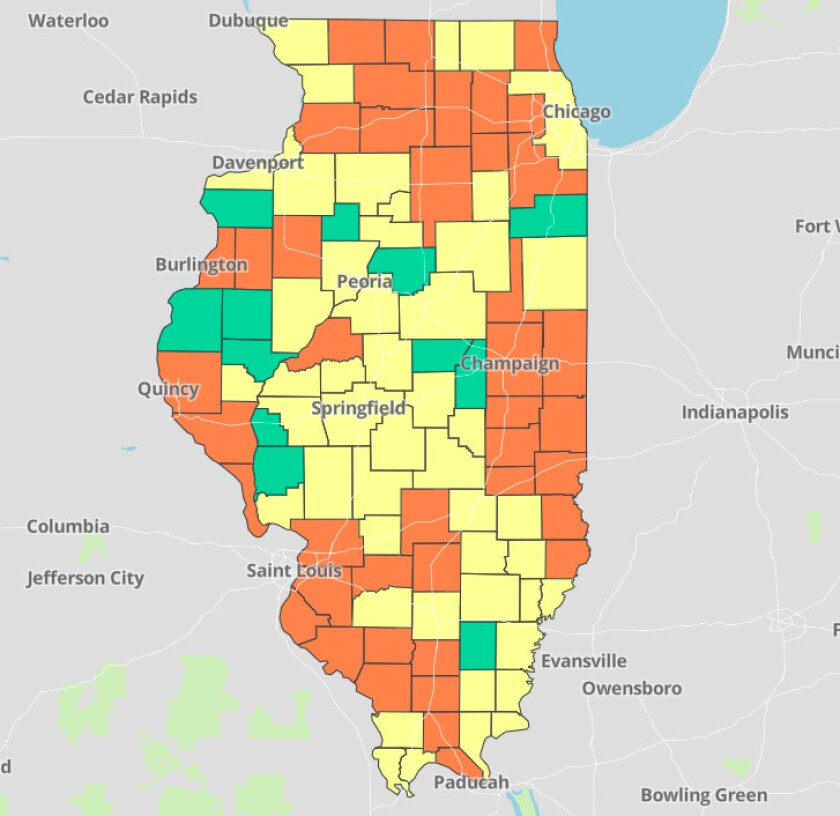Cook County is back down to a medium COVID-19 transmission level under federal standards as case rates dip — but viral hospitalizations and deaths across Illinois remain near five-month highs.
Despite the improvement in Chicago and its immediate suburbs, masks are still recommended indoors across most of the metro area, public health officials said Friday.
Lake, Kane, DuPage and Will counties are among 42 Illinois counties at the high transmission level as determined by the U.S. Centers for Disease Control and Prevention, which means masking is urged in all indoor public settings. That’s a decline from the 59 counties at the CDC’s orange risk level a week earlier.
Transmission had been considered high in Cook County for nearly a month, during a summer in which it has hovered back and forth several times between the medium and high transmission levels.
The risk level was downgraded because Cook County’s case rate has fallen below the threshold of 200 cases per 100,000 residents for the last week — but just barely so, with that metric sitting at 192. The figures are slightly better for Chicago on its own, with a case rate of 186.
“I am pleased to see the city back at the Medium Level,” Chicago Public Health Commissioner Dr. Allison Arwady said in a statement. “We should all keep in mind, however, that the pandemic is not over — get vaccinated and boosted if you haven’t already, continue to follow guidelines on masking in crowded indoor settings, get tested and stay home if you’re experiencing symptoms, and get treatment if you are infected and at higher risk of severe outcomes.”
A total of 48 counties, including McHenry, are at the medium level at which older residents and the immunocompromised are urged to cover their faces around others indoors.
COVID transmission is considered low in only 12 Illinois counties, or about 12% of the state map. Kankakee is the only one in the Chicago area.
Cook County hasn’t seen low transmission since the first week of May, as the most infectious iterations of the virus yet — the BA.4 and BA.5 subvariants of Omicron — have gripped the nation.
Case rates have slowed in Chicago and beyond over the past two weeks, with an average of about 3,800 positive lab tests being returned each day over the past week, compared to more than 5,000 per day as of July 29. Those figures don’t include at-home tests, so many thousands of more people are getting infected.
Graph not displaying properly? Click here.
The residual effects of the midsummer case rise are still being felt in Illinois hospitals, which were treating 1,506 COVID patients Wednesday night, the most seen since Feb. 17. That number dipped to 1,471 Thursday night. Hospitals faced their greatest COVID burden of the pandemic in January, when more than 7,300 beds were filled.
Meanwhile, with an average of 18 Illinoisans lost to the virus each day over the past week, the virus is claiming lives at its most vicious clip since mid-March. In the worst days of the crisis, more than 150 were dying of the virus each day, back in mid-December 2020.
Experts have long said the key to preventing more illness and death is vaccination. About 69% of Illinois’ total population are considered fully vaccinated against COVID. Only a little over half of those vaccinated residents have gotten a booster.
Shots are urged for everyone 6 months or older. For help finding one, visit vaccines.gov.






